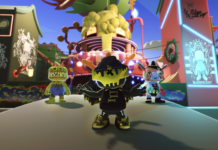Tactics Ogre: Let Us Cling Together is not an easy game to find. Developed in the ‘90s by the same team behind Final Fantasy Tactics, the Tactics Ogre series is one of the most beloved tactical RPGs in Japan, and has a strong fanbase abroad. While the games have been brought to the States in the past, poor sales lead to waning interest. Tactics Ogre: Let Us Cling Together, when it originally released in 1997 for the PlayStation 1, was published in very limited numbers. To find a copy now can easily cost $80.
But things have changed. Original developer Quest has since been bought out by Square Enix, meaning the Tactics Ogre franchise is wholly theirs. Ripe for rerelease, Square Enix has ported the game to the PlayStation Portable, updated some features, and is attempting to deliver the strongest release in the franchise. Even more, there’s plenty to see that is new and fresh to the game.

Welcomed by a short questionnaire that will define the alignment and how people interact with the main character, the beginning of the title is as expected. It even goes to the length of asking for the character’s birthday, which will impact the good/evil alignment. Considering this is a story about the conflicts between many different races, factions and groups, having one group dislike you usually leads to someone else finding the main character to be of a friendly nature.
What was reiterated constantly is how player interactions with other characters will impact the game. While there are only two possible endings, the game offers subtle variations to how the plot plays out. If Denam, the main character, is an arrogant, untrusting jerk to a certain group of soldiers or people, their interactions with him will be affected. When trying to recruit new members to your army, having them respond better to you is often better in the long run of productivity. With over 60 characters to add to your troop, depending on decisions made, some will join and others will refuse. It’s all based upon the individual interactions.
The battles will be instantly recognizable for those who have played any of the previous Tactic Ogre or Final Fantasy Tactics games. Battles take place on a grid, and players move their units around like chess pieces, performing magical or technical attacks against enemy units. However, small details, such as how high a character is on the terrain, what direction a character is facing, or even the weather, is important. Players will have to be aware of these details, as a death on the battlefield is permanent. Once they are gone, they are gone for good, which can greatly impact the story.

Thankfully, the game doesn’t level characters up individually. The title dishes out experience points to the classes, rather than characters, that occupied the battlefield. That way, if your level 30 healer is killed, you don’t have to train up a new healer, as every other healer will be level 30. They just may need to gain some skill points instead.
Since this is a remake of a PS1 original, there are some brand new additions to the game. First and foremost, the game has had minor graphical boosts. All the spell attacks have been re-rendered, and there have been new tweaks to the isometric battlefield. No longer are you locked to the one-view angle, players can now switch to an overhead birds-eye view, or even swing it to the other side of the playing field. This may not sound like much, but it means a lot for particularly tough battles with a lot of vertical terrain where it is hard to actually place units. Even more, battles are much faster, with the moves made by enemy characters happening almost instantly.
Additionally, the game is introducing random battles, as well as an increase in the number of characters on the battlefield. The whole game has been relocalized, so many of the character names have been changed slightly, as well as the general plot. Overall, all of these changes are designed to assist the player and lend to a more portable friendly experience.
The most important new addition to the game is the Wheel of Fortune. A symbol on the tarot card, the Wheel of Fortune serves two functions. On the battle field, players will be able to activate the wheel and move back 50 turns. The best use of this function is to turn back the clock a handful of turns to save a character from peril or use better tactics to gain a leg up on the opponents.

However, outside of battle is where the Wheel of Fortune truly shines, as players can replay levels that ultimately have influence the storyline. So instead of having to go through the game multiple times to see everything the developers created within the plot, players can start up the game at any point they please. Basically, it’s a “what if” mode that will save the most hardcore hundreds of hours, and allow the rest of us to experience the whole game. More RPGs need to have this.
It is clear that Tactics Ogre: Let Us Cling Together is going to be the definitive version of the game. For a tactical RPG with depth, it doesn’t look like it will get much better than this, and with the brand new additions to the title, fans of the original would be doing themselves a disservice by not keeping an eye on this one when it comes out next spring.










